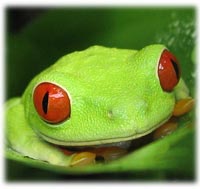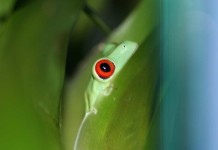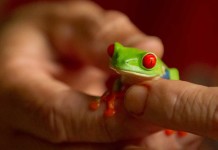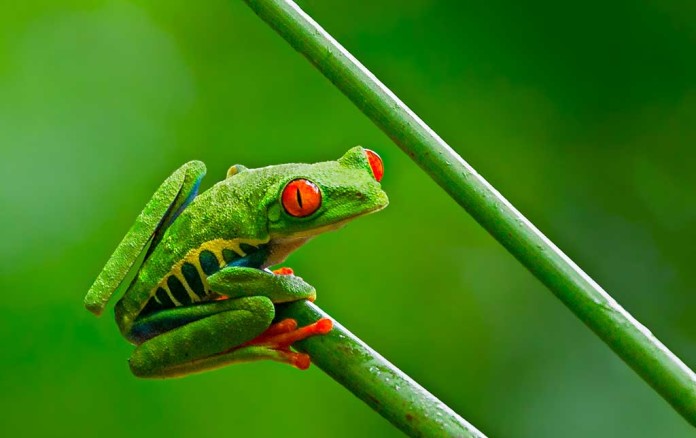You see red eyed tree frog photos everywhere. They are one of the most photographed animals because of their brilliant color and inherent charm. You can take your own photos of the red eyed tree frog and you don’t have to go to the rainforest to capture the perfect shot. Photo opportunities for these amphibians are right around the corner.
Photographing in Captivity
The majority of red eyed tree frog photos are taken in captivity and not in the wild. If you would like to take your own photos of this very photogenic amphibian, try the local pet shop. They will sometimes allow you to take photographs of their frogs, especially if you share the finished product with them.
 Since red eyed tree frogs sleep during the day, it would be best to photograph them at night so that you do not disturb their natural habits. Photographing red eyed tree frogs at night is also better because you can capture them at their most active; for example, when they are feeding. Do not use a direct flash as this may disturb them visually.
Since red eyed tree frogs sleep during the day, it would be best to photograph them at night so that you do not disturb their natural habits. Photographing red eyed tree frogs at night is also better because you can capture them at their most active; for example, when they are feeding. Do not use a direct flash as this may disturb them visually.
Experiment with composition of your photographs. Capturing the entire frog in an image is not necessary for it to be quite compelling. Using a macro lens is the optimal way to catch the red eyed tree frog up close and personal.
Photographing in the Wild
If you are fortunate enough to have the opportunity to photograph red eyed tree frogs in the wild, here are a few tips to keep in mind:
- Respect your subject and its habitat. Never harass your subject or disturb their environment.
- Be patient. Wait for it to go about its normal routine and don’t interfere.
- Look for details and focus on those for interesting photos.
- Try to take the photos at eye level for the most impact.
Armored with these simple tips and the willingness to be very patient and respectful, the outcome will be dazzling red eyed tree frog photos.
Whether you photograph red eyed tree frogs in the wild or captive, they make wonderful subjects and you will come away with beautiful photographs. Above all else, always be respectful of the frog and its habitat.














